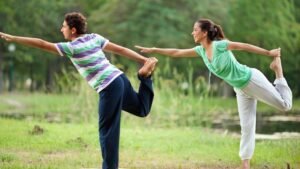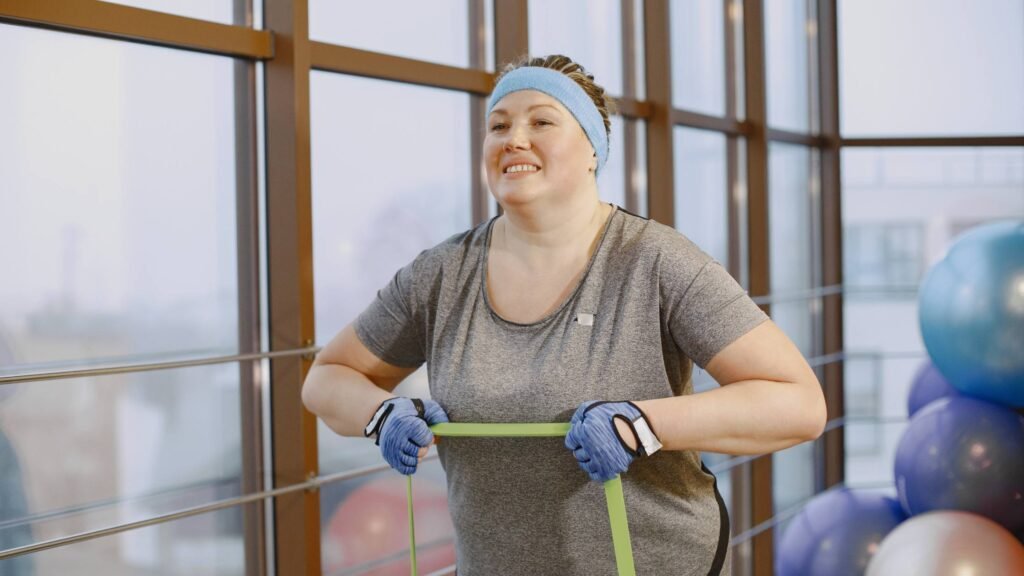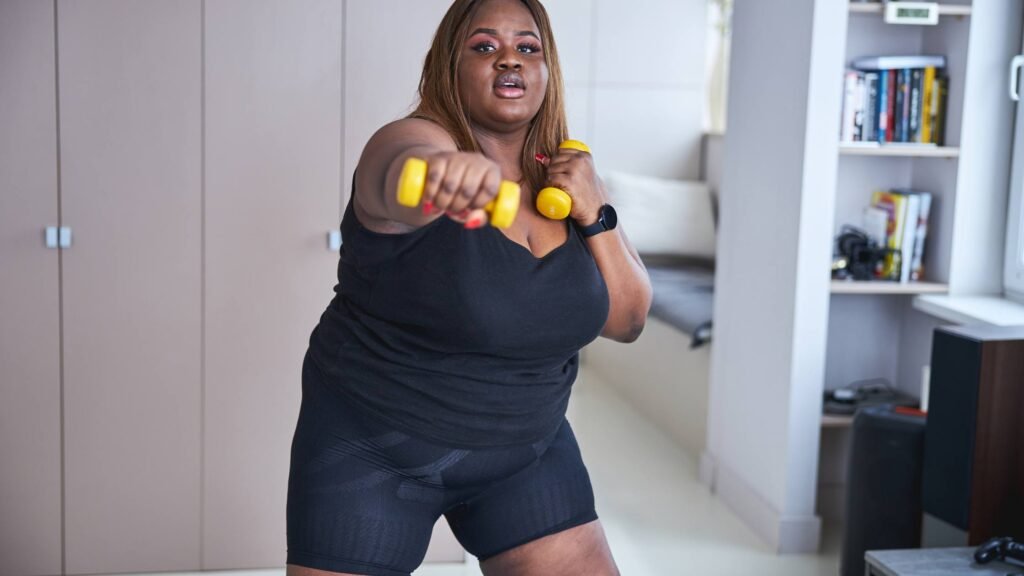Knee injuries are all too common, whether you’re a weekend warrior, an avid runner, or just someone trying to keep active in daily life.
But what if you could prevent these injuries before they even happen?
Strengthening your knees and keeping them healthy is crucial not just for athletes but for anyone looking to live a long, active life. And the best part? It’s never too late to start!
A lot of people go through knee pain at some point in their lives, and it’s often not because of something dramatic.
Sometimes, it’s the little things—the repeated strain from not strengthening the muscles around the knees, the lack of proper warm-up, or maybe even just poor posture. It can happen to anyone, no matter their age or fitness level.
7 Best Exercises to Strengthen Your Knees and Prevent Injury

1. Squats – The Ultimate Leg Strengthener
Squats are a staple in any knee-strengthening routine. They target your quads, hamstrings, and glutes, all of which play an essential role in supporting your knees.
But, as simple as squats seem, many people mess them up, leading to more harm than good.
The Right Way to Do a Squat:
- Stand with your feet shoulder-width apart.
- Keep your chest lifted and shoulders back.
- Lower your body as if you’re sitting into a chair—keep your knees behind your toes.
- Go as low as you can while maintaining good form. Aim for at least parallel to the ground.
- Push through your heels to return to standing.
Common Mistakes to Avoid:
- Letting your knees collapse inward (known as knee valgus).
- Not keeping your weight in your heels.
- Going too fast without proper control.
Squats are fantastic because they strengthen your knee joint by working the muscles around it. Aim for 3 sets of 10-15 reps to start.
You’ll start noticing the difference in your knee stability and overall leg strength.
2. Lunges – Targeting Multiple Muscles at Once
Lunges work your quads, hamstrings, and glutes, just like squats, but they also require more balance and coordination, which is key for knee stability.
They help improve joint mobility and increase functional strength, which is important for everyday movements like walking, climbing stairs, or bending down.
The Right Way to Do a Lunge:
- Start standing with your feet hip-width apart.
- Step forward with one leg, lowering your hips until both knees are bent at about 90 degrees.
- Your back knee should hover just above the floor.
- Push through the front heel to return to standing, and alternate legs.
Common Mistakes to Avoid:
- Letting the front knee go beyond your toes.
- Not engaging your core for balance.
- Leaning forward too much, which can put unnecessary pressure on your knees.
Start with bodyweight lunges and work your way up to adding dumbbells as your strength improves. Do 3 sets of 10-12 reps per leg.
3. Step-Ups – Building Knee Strength and Balance
Step-ups are another excellent exercise for knee health. They mimic the motion of climbing stairs, which is something we do every day without thinking about it.
Step-ups help strengthen the muscles around your knee while also improving balance, which can be crucial for preventing falls and knee injuries.
The Right Way to Do a Step-Up:
- Stand in front of a sturdy bench or step.
- Step up with one foot, pushing through the heel to lift your body.
- Lower the other leg down slowly, focusing on control.
- Alternate legs after each rep.
Common Mistakes to Avoid:
- Pushing off with the back leg instead of the front.
- Using momentum instead of controlled movement.
- Stepping up too high, which can strain the knee.
Aim for 3 sets of 12-15 reps per leg. As you get stronger, you can increase the height of the step or add dumbbells for added resistance.
4. Leg Extensions – Isolate Your Quads
Leg extensions are a fantastic exercise to target your quadriceps, the muscles at the front of your thighs.
Strong quads are essential for knee stability because they help extend the knee joint.
However, when performing leg extensions, it’s important to not overdo it—too much weight or improper form can strain the knee.
The Right Way to Do a Leg Extension:
- Sit on a leg extension machine with your knees aligned with the pivot point.
- Select an appropriate weight, not too heavy.
- Extend your legs fully, then slowly lower them back down.
Common Mistakes to Avoid:
- Using too much weight, which can lead to jerky movements.
- Locking your knees at the top, which can put unnecessary stress on the joint.
- Not controlling the descent of the weight.
Start with light weights and focus on slow, controlled movements. Do 3 sets of 10-12 reps.
5. Hamstring Curls – Strengthening the Back of the Leg
Your hamstrings are the muscles at the back of your thighs, and they play a key role in knee stability as they work in opposition to your quads.
Strengthening your hamstrings can help balance the forces acting on your knee joint, reducing the risk of injuries.
The Right Way to Do a Hamstring Curl:
- Use a hamstring curl machine or a resistance band.
- If using a machine, adjust the seat so that your knees align with the machine’s pivot point.
- Curl your legs up toward your glutes, keeping the movement slow and controlled.
Common Mistakes to Avoid:
- Arching your back during the curl.
- Using too much weight, which can lead to jerky movements.
- Not fully extending your legs at the start of the movement.
Do 3 sets of 12-15 reps. If using a resistance band, aim for slow, controlled movements, focusing on engaging the hamstrings.
6. Calf Raises – Strengthening the Lower Legs
Calf raises are often overlooked, but they play an important role in knee health. The calves help stabilize your lower leg and assist in absorbing shock when walking, running, or jumping.
Strengthening your calves can take the pressure off your knees and improve overall leg stability.
The Right Way to Do a Calf Raise:
- Stand with your feet hip-width apart, near a wall or sturdy surface for support.
- Slowly raise your heels as high as you can, focusing on the contraction in your calves.
- Lower slowly back to the ground.
Common Mistakes to Avoid:
- Using momentum to lift your heels.
- Not going through a full range of motion.
- Not controlling the descent.
Start with bodyweight calf raises and aim for 3 sets of 15-20 reps. You can increase difficulty by holding dumbbells or standing on an elevated surface.
7. Bridges – Strengthening the Glutes and Core
Bridges are an excellent way to strengthen the glutes, hamstrings, and lower back, which all contribute to knee stability.
They’re especially beneficial for people who spend long hours sitting, as they help counteract the effects of tight hips and weak glutes.
The Right Way to Do a Bridge:
- Lie on your back with your knees bent and feet flat on the floor, hip-width apart.
- Push through your heels to lift your hips toward the ceiling, squeezing your glutes at the top.
- Lower back down slowly, maintaining control.
Common Mistakes to Avoid:
- Arching your lower back too much.
- Using your lower back muscles instead of your glutes.
- Not engaging your core for stability.
Do 3 sets of 12-15 reps. To make the exercise harder, try doing single-leg bridges or adding a resistance band around your knees.
Final Thoughts
Strengthening your knees is a process that takes time and consistency, but it’s well worth the effort.
A lot of people neglect their knee health until it’s too late, but by incorporating these exercises into your routine, you can prevent injuries and improve your overall leg strength.
One thing to keep in mind is that knee pain or discomfort could be a sign that something else is wrong, so it’s always a good idea to listen to your body.
If something feels off, don’t push through the pain. Start slow, and build your way up. And remember, it’s all about balance—strengthen the muscles around the knee, stretch regularly, and focus on mobility.

